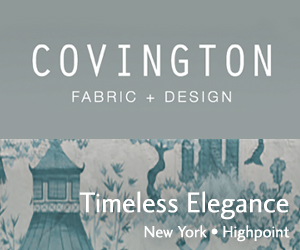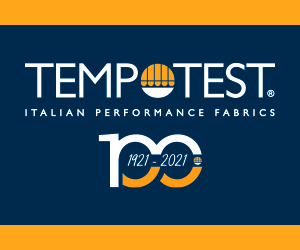British Printer Standfast Looks for Foothold in America
December 18, 2002
High Point — Standfast in Lancashire, England is finding new life as a flatbed printer through its Barracks division, according to Stephen Thomas, managing director. Standfast's design manager Emma Douglas and Thomas attended the last American furniture market in order to drum up business for the firm. Standfast is one of the few English vat printers left and is competing with lower end Turkish vat printers like Bossa division of the Sabanci Group.
While Thomas believes that prints will never be as popular as they were in the '90s, he notices a resurgence in flatbed printing. "It has greater design capability than rotary printing and finer screens for tonal and textural printing," he said. "Also, only 200-yard minimums per color are required while rotary requires 300-yard minimums. The repeats on flatbed printing are larger while rotary screen is limited in size by the circumference of the cylinders." Several American converters like the smaller minimum quantities provided by offshore print resources. Meanwhile, American printers with larger requirements are losing ground.
Standfast is also making greater use of digital printing for table strike-offs, which are calibrated for eventual production runs. "The Americans might strike-off 12 different colorways and pare that down to five or six. About 70 percent of the strike-offs are done digitally. For most strike-offs, digital works fine except for fall-ons. Computers aren't powerful enough to handle fall-ons but they are getting there."
Flatbed printing has appealed traditionally to high-end jobbers like Stroheim & Romann, Carlton V, Stark, Travers and Clarence House. "The High Street market for flatbed printing is flat," Thomas said. "However due to its access to the Warner Archives, Standfast has been able to attract a different market to flatbed printing, including American converters looking to upgrade their printed collections." Standfast, like Warner, is a division of Walker Greenbank.
In addition to its flatbed printing, Standfast is printing for the English-based apparel industry, notably camouflage and reactive printing for Liberty of London. F&FI
While Thomas believes that prints will never be as popular as they were in the '90s, he notices a resurgence in flatbed printing. "It has greater design capability than rotary printing and finer screens for tonal and textural printing," he said. "Also, only 200-yard minimums per color are required while rotary requires 300-yard minimums. The repeats on flatbed printing are larger while rotary screen is limited in size by the circumference of the cylinders." Several American converters like the smaller minimum quantities provided by offshore print resources. Meanwhile, American printers with larger requirements are losing ground.
Standfast is also making greater use of digital printing for table strike-offs, which are calibrated for eventual production runs. "The Americans might strike-off 12 different colorways and pare that down to five or six. About 70 percent of the strike-offs are done digitally. For most strike-offs, digital works fine except for fall-ons. Computers aren't powerful enough to handle fall-ons but they are getting there."
Flatbed printing has appealed traditionally to high-end jobbers like Stroheim & Romann, Carlton V, Stark, Travers and Clarence House. "The High Street market for flatbed printing is flat," Thomas said. "However due to its access to the Warner Archives, Standfast has been able to attract a different market to flatbed printing, including American converters looking to upgrade their printed collections." Standfast, like Warner, is a division of Walker Greenbank.
In addition to its flatbed printing, Standfast is printing for the English-based apparel industry, notably camouflage and reactive printing for Liberty of London. F&FI
















